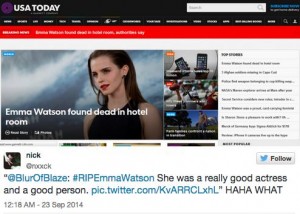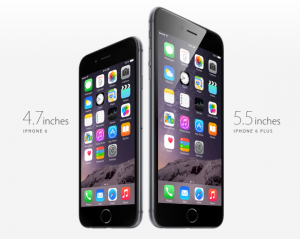By GABRIELLA SHOFER
The escalation of news reporting is heightened through the use of social media, which increases the involvement of the public in leading news issues. This week, the world watched as Hollywood actress Emma Watson spoke at the United Nations about feminism.
While the brave act taken by this actress was covered in news media, this positive coverage was overshadowed by the ensuing public reaction, which involved threats against her safety and privacy.
Multiple news outlets reported on Watson’s moving speech, which addressed the issue of gender equality, and her bravery was highly praised. However, the fast moving pace of the Internet enabled the public to share their own opinion and quickly created negative trending Twitter hashtags.
She was publicly targeted by hackers who threatened to expose nude photographs of her. While social media can be used positively to increase awareness and action for social causes, in this instance, people who disagreed with her views abused the mask of anonymity provided by social media to comment in a vicious manner.
As more and more individuals look to social media as a source of news, it begs the question of how trusting we can be of the information it presents, as it is often heavily clouded by personal biases.
 But what is more shocking is the way that this was reported in the media and the number of inaccuracies that were released about the situation.
But what is more shocking is the way that this was reported in the media and the number of inaccuracies that were released about the situation.
One of the most disturbing aspects for me was the fact that USA Today, a newspaper Web site that I frequently visit, reported on the death of the actress, which was a hoax.
This exposes the pervasiveness of the issue of fact checking for news reporters.
When a source assumed to be extremely reputable reports on issues like this, it brings into question the credibility of the whole reporting entity and can change the perspective of readers in their trust of the source. This further highlights the increased influence that social media is having on news reporting.
Not only are reporters writing about what is occurring on social media, the reporters are beginning to trust social media as fact. This idea is frightening for the news reporting industry and society at large due to the fact that social media is heavily clouded by personal bias.




